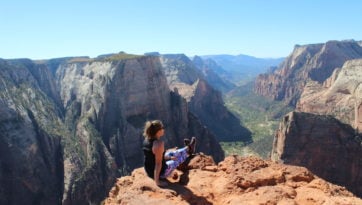Experience wildlife, temples, beaches and culture in a luxury Sri Lanka family tour.
It might be small compared to its neigbour that towers to the north, but Sri Lanka is a wonderfully diverse and fascinating country. Packed full of ancient ruins, hilltop temples, sandy beaches and national parks home to herds of elephants, it has everything you need for the perfect family getaway.
The Cultural Triangle, marked by the three points of Kandy, Anuradhapura and Polonnaruwa is a culturally rich area home to ruined cities, fortresses, and temples and monuments that can be explored by bike. Children will love entering the palace complex of Sigiriya through a pair of enormous lion’s feet amd exploring the extraordinary caves of Dambulla.
Go in search of wildlife in Yala and Gal Oya National Parks, enjoying a safari through the parks, eyes on stalks as you look out for calfs splashing in the watering holes and monkeys swinging between the trees. And of course, no trip to Sri Lanka would be complete without some time relaxing as a family on the beautiful coast.
Our top example family trips to Sri Lanka
Our Sri Lanka trip was amazing. We added Sri Lanka to our already planned Maldives vacation and engaged Jacada to design our trip. Rosanna understood our goals and expectations right off the bat. She put together an itinerary that was perfect. We have engaged travel agents prior, and this was by far one of our best experiences. She is absolutely…
From the first phone call, to the moment our guide dropped is back at the airport at the end of the trip, everything went so smoothly. Great planning, great itinerary, great guide/driver, great service, a great experience!
Our itinerary to Sri Lanka and Maldives was PERSONALIZED and CUSTOMIZED! Travel agent, Leanne Anglo, personally called me, asked our desires, LISTENED, and established a FABULOUS itinerary!! Our 2-week vacation was perfect as it included so many highlights that you’d want on a wonderful, relaxing and memorable vacation. We spoke with Leanne several times over the 16-month planning stage –…
I contacted 3 highly rated travel agencies to plan our trip to Sri Lanka and Maldives (this is a way I determine their responsiveness and quality). JACADA TRAVEL came out on top! (Another company sent me e-mails and was way too willing to agree to places I mentioned without any further thought; the other company never called me for the…
I have worked with a number of travel agents over the years and have pretty much traveled the world. Our recent experience on a luxury 3 week trip to Thailand and Sri Lanka planned and managed my Jacada was simply superb. The attention to detail was outstanding at every step of the way. Our personal travel concierge, Gilda Tang, reviewed…
Need to Know
When to go
Sri Lanka’s tropical climate generally offers warmth and sunshine throughout the year. Temperatures average between 27-30 °C in Colombo and on the coasts, peaking in April. In the hill country, they are around 10°C cooler. The east coast is best visited between March and September, whilst the south coast is at its peak between November and March. The north and east of the island represent the dry zone, while the western slopes of the central highlands are wettest.
Sri Lanka lies 400 miles north of the equator and is affected by two monsoon seasons caused by the winds originating from the Indian Ocean and the Bay of Bengal. The sout west monsoon (Yala) originates from the Indian Ocean and brings most rain to Colombo and the south and west coasts during May and June. The north east monsoon (Maha) brings rain from the Bay of Bengal and affects the far north and east between December and February. In this dry zone, the monsoon makes up the vast majority of its rain for the year.




























